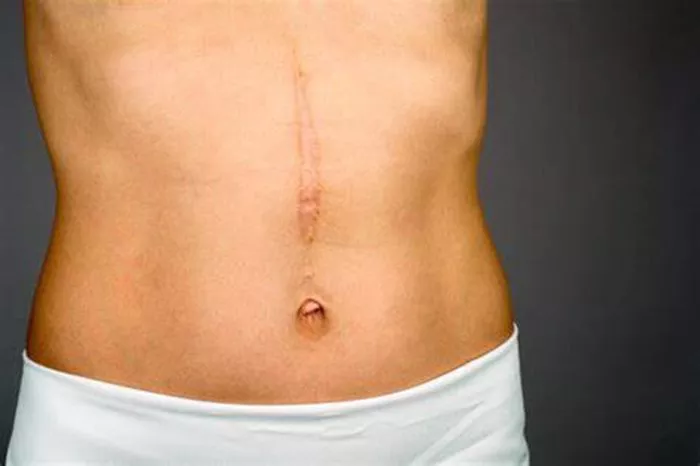Surgery scars are a common outcome following any surgical procedure. These scars are the visible reminders of the body’s natural healing process but often linger as permanent marks on the skin. This phenomenon raises curiosity and concern: why do surgery scars never completely disappear? To understand this, we delve into the intricate process of wound healing, the nature of scar tissue, and the factors influencing scar formation and permanence.
The Skin’s Structure and Its Role in Healing
The skin, the largest organ of the body, serves as a protective barrier against the external environment. It is comprised of three primary layers: the epidermis (outer layer), dermis (middle layer), and hypodermis (deeper subcutaneous tissue). Each layer plays a critical role in the body’s response to injury.
The Epidermis: The outermost layer, which provides a waterproof barrier and creates our skin tone.
The Dermis: Beneath the epidermis, contains tough connective tissue, hair follicles, and sweat glands.
The Hypodermis: Made up of fat and connective tissue, which houses larger blood vessels and nerves.
When surgery is performed, it typically involves incisions that cut through these layers, triggering the body’s healing mechanisms.
The Process of Wound Healing
Wound healing is a complex and dynamic process, involving a series of phases that overlap:
Hemostasis Phase: Immediately following an injury, the body initiates a blood clotting response. Platelets aggregate to form a clot that stops bleeding and releases chemicals that attract cells that aid in healing.
Inflammatory Phase: This phase begins right after the clot forms, characterized by redness, warmth, swelling, and pain around the wound site. During this phase, white blood cells swarm the area to clear out debris and bacteria.
Proliferative Phase: Occurring a few days after the injury, this phase involves the growth of new tissue by proliferating and migrating cells to the wound site. Fibroblasts play a crucial role here, depositing a new extracellular matrix and collagen.
Maturation Phase: Over weeks to months, the wound continues to strengthen and restructure. Collagen is remodeled from type III to type I, making the tissue stronger.
Scar Formation: A Result of Imperfect Healing
Scarring is essentially the body’s way of quickly mending tissue after injury. However, the restored tissue differs in its structure and function:
Collagen Composition: Unlike normal skin, scar tissue has an abundance of collagen type I, which is laid down rapidly and in a disorganized manner. This results in a tissue that is thicker and denser than normal skin but lacks flexibility and strength.
Lack of Normal Skin Features: Scar tissue does not contain sweat glands or hair follicles, contributing to its distinct appearance from surrounding skin.
Factors Influencing Scar Formation and Permanence
Depth and Size of the Wound: Larger and deeper wounds typically result in more significant scarring because more tissue needs to be replaced.
Location on the Body: Areas where the skin is tight or undergoes a lot of movement tend to form thicker scars.
Age: Younger skin tends to heal faster but may also produce more robust and noticeable scars due to more vigorous healing responses.
Genetics: Some individuals are genetically predisposed to develop more significant scarring.
Infection and Complications: Infections can exacerbate the inflammation process, leading to more substantial scarring.
Techniques and Treatments to Minimize Scarring
Despite the permanence of surgical scars, various methods can minimize their appearance:
Surgical Technique: Precision in surgical technique and minimizing tissue trauma can reduce scarring.
Postoperative Care: Proper care of the wound, keeping it clean and moisturized, can help reduce scarring. Limiting movement and stress on the wound can also be crucial.
Medical Treatments: Topical treatments such as silicone gel sheets, steroid injections, or laser therapy can improve the appearance of scars by modifying the inflammatory process and collagen synthesis.
Surgical Revision: In some cases, surgical revision of scars can be performed to improve the appearance or function of the scar tissue.
The Psychological Impact of Scars
Scars are not just physical marks; they can also carry psychological implications. They may serve as reminders of traumatic events or significantly impact self-esteem and body image. Psychological support and counseling can be beneficial for individuals struggling with these issues.
Conclusion
Surgery scars are an inevitable result of the body’s rapid response to heal itself post-injury. While they never completely go away due to the nature of collagen deposition and imperfect tissue replacement, understanding the factors that influence scar formation can help manage and minimize their appearance. With advances in medical treatments and a better understanding of wound care, the future holds promise for even more effective scar management strategies. Meanwhile, acknowledging the psychological impact of scars is equally important in the holistic management of patients recovering from surgery.
[inline_related_posts title=”You Might Be Interested In” title_align=”left” style=”list” number=”6″ align=”none” ids=”7808,7805,7848″ by=”categories” orderby=”rand” order=”DESC” hide_thumb=”no” thumb_right=”no” views=”no” date=”yes” grid_columns=”2″ post_type=”” tax=””]
































